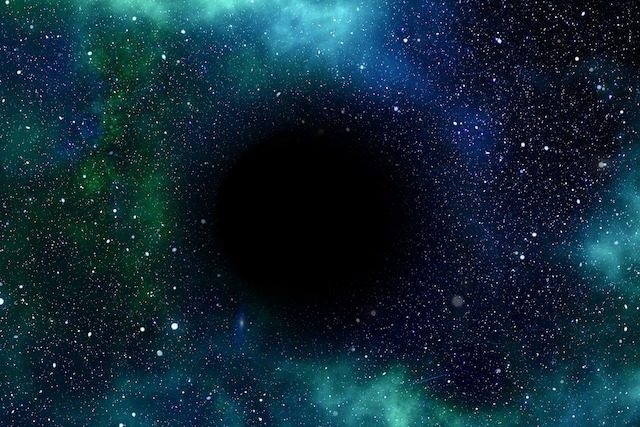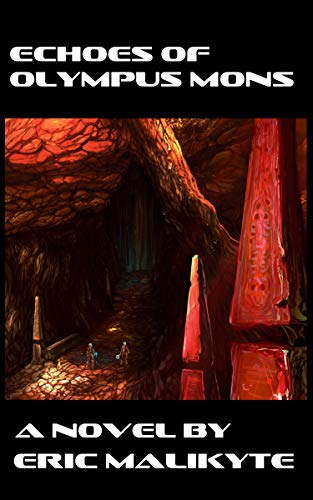Like Great Cthulhu, who lies dead and dreaming in the sunken city of R’lyeh, or the nuclear chaos–the blind idiot god–Azathoth, in HP Lovecraft’s stories and other cosmic horror stories, the universe is home to planets and celestial objects that defy our expectations and exhibit truly horrific environments–where humankind was surely never meant to voyage.
Here are 10 of the most terrifying hellscapes in the known universe.
10. Trappist-1
Imagine that you stand on the surface of an alien world, where the sky burns dark and crimson, oceans of magma stretch from horizon to horizon and volcanoes constantly resurface the planet. A red globe of light rises slowly above the horizon, but unlike Earth’s star, it barely provides any light at all. Five other worlds appear as moons, forever drifting in the dark, threatening one another in their eternal celestial dance. Brilliant auroras fill the sky, burning and caressing the atmosphere, irradiating the surface and anything that dares to draw breath.
The Trappist-1 system may be the best hope for finding an Earth-like planet yet, with each of its seven planets being very Earth-like. Scientists think that many, if not all, have some sort of atmosphere and feature liquid water.
But—there’s always a but, isn’t there?—it may also be terribly inhospitable.
So far, evidence suggests that these worlds orbit their parent star peacefully. But, if our system is any indication, orbits are rarely static. Earth itself has at times exhibited a more elliptical orbit (which has been used as a possible explanation for our many ice ages).
A bigger threat to emerging life and habitability in the Trappist-1 system, however, may be a process called magnetic induction, causing many of the innermost worlds (even those in the habitable zone) to have oceans of flowing magma (like Io, which orbits Jupiter).
There is also the fact that super-cool dwarf stars like Trappist-1 are extremely active. They flare more than our star does, and this could prove to be particularly dangerous for the planets that orbit at such close proximity.
Trappist-1 is also a very dim star. Super cool dwarfs don’t emit much visible light, so processes like photosynthesis may be impossible. So, we can probably rule out rich vegetation.
9. Wasp-12b Exoplanet
A black shape transits across the surface of a star not unlike our own. It glows with an eerie iron red halo as its parent star devours it, the tidal forces squishing it and inflating the atmosphere until it’s nearly the size of Jupiter.
Welcome to WASP-12b. Deep in the Auriga constellation. Where the tidal forces of its dwarf star parent are so great, they stretch the planet into the shape of a football, and diamond is as abundant as limestone is on Earth. Despite how close the planet is to its star, it emits almost no light, making it one of the darkest exoplanets ever discovered.
But it won’t be around for long, because its host star is devouring it.
8. PSO J318.5-22
https://www.youtube.com/watch?v=Qmch7j9yIN8
In the depths of interstellar space, a lone rogue burns on through the darkness. From within its raging dust clouds, there is no star in the ever-night sky. But, even with no star to warm its skies, somehow, its temperatures rage on into the 800s, and it rains rocky debris and pure iron.
PSO J318.5-22 is a rogue planet, a lonely, wandering jovian class world with no star to call its home. It exists some 80 light years away in the constellation capricornus. The planet is thought to be six times larger than Jupiter, and, surprisingly warm for a free-floating object.
The object is part of a group of stars which formed almost 12 million years ago. That’s relatively recent in cosmic terms. Scientists aren’t quite sure how objects like these end up floating all by their lonesome in the depths of interstellar space.
7. Mira: A Real Shooting Star
Imagine that you wake up in the middle of the night. There’s an odd glow visible from your bedroom window. You go outside and stare up at the night sky. You see a new, bright object in the night sky. At first, you think it’s a comet. But, soon realize that it’s not. It’s a star, shedding its material much like a comet.There’s just one problem, your world is in its way.
You’ve heard of so-called “shooting stars,” which you’ve probably also learned are nothing more than meteoroids burning up in our atmosphere. But what if we told you there were real shooting stars out in the blackness of space?
With a tail of cosmic gas and debris that stretches 13 light years, Mira is quite special. It’s actually part of a binary system, and its partner (Mira-B) feeds off of its stellar partner. A bow shock forms in front of the star, as it swallows up cosmic dust and gas and anything unlucky enough to get in its way.
So, what’s so terrifying about this? Imagine if our world were in its way.
6. Wandering Black Holes (Black Holes)

You’re looking through a telescope, focusing on Jupiter. You notice something warping the stars around the planet’s bright surface. Then, you see a large trail of gas and dust stretching from Jupiter to a dark spot, hurtling through space toward you.
The earth rumbles, and you realize that it’s all over for humanity.
Wandering black holes are terrifyingly common in our Milky Way Galaxy. Scientists have found two possible Jupiter-sized black holes in gas clouds using ALMA, a set of 66 telescopes spread throughout the Atacama Desert in Chile. And it’s thought there are close to 100,000,000 black holes in our galaxy alone.
But what would happen if such a black hole came close to us? Well, unfortunately, if a wandering black hole got anywhere near our star system, the results would be disastrous, throwing the orbits of every planet, even our Sun, into utter chaos. The most terrifying part? We wouldn’t see it coming until Jupiter and the other gas giants ended up getting their atmospheres gobbled up by the black hole’s immense gravity, creating an accretion disk.
5. Supermassive Electric Current
From the bright core of a spiral galaxy shoots a massive jet of glowing material. Getting any closer than 150,000 light years would mean certain death due to immense radiation and the strongest electric field in the universe.
Equalling about a trillion bolts of lightning, the cosmic jet resulting from the supermassive black hole at the core of galaxy 3C303 is the strongest electric current ever detected in the known universe. Scientists aren’t sure why the electric field is so powerful but theorize that it has something to do with the jets created by the supermassive black hole at the galaxy’s center.
Considering that the Milky Way is only estimated to be about 100,000 light years in diameter, that’s quite impressive, if not terrifying.
4. Hand of God
https://www.youtube.com/watch?v=fjpIw-J4NtY
From the depths of space, the apparition of a ghostly hand reaching up to grab the corpse of a star that went supernova. It flashes with dangerous x rays, filling the pulsar cloud that makes up the hand every seven seconds.
Created by a pulsar wind nebula, the hand formation that the pulsar creates is a mystery scientists are still trying to solve. If our Earth were too close to a pulsar like this, and in the direct path of its gamma ray and X-ray jet, all life on Earth (except extremophiles in caves and near volcanic oceanic vents) would likely go extinct.
Pulsars like the one creating the Hand of God nebula are actually rapidly rotating neutron stars, which emit pulses of intense radio waves and electromagnetic radiation. It has been suggested that objects like these, which emit gamma ray radiation, if pointed directly at the Earth, could cause a mass extinction event.
3. The Boomerang Nebula
From within the hourglass nebula, you freeze almost instantly, drifting through space on a collision course with a dying star.
A proto-planetary nebula created by a dying red giant star 5,000 light years from Earth. It’s the coldest object in the known universe. The boomerang nebula’s average temperature is a minus 458 degrees Fahrenheit (or 1-degree Kelvin). For reference, the coldest place on Earth (located in Antarctica) registers minus 133.6 degrees Fahrenheit.
The team of astronomers using the Atacama Large Millimeter/submillimeter Array (ALMA)–located in the Atacama desert in northern Chile–suggest that the extremely low temperatures may be caused by the collision of a small companion star, plunging into the dying red giant’s surface. The rapid expansion of gas caused by the collision is likely what’s causing the extreme decrease in temperature.
2. RXJ1347

Assuming you had a ship that could get you to this galaxy cluster, it would likely melt within seconds of entering the hottest place in the known universe.
A gas cloud surrounding a galaxy cluster in the constellation Virgo is the hottest place in the known universe. It’s thought that this massive celestial heat storm was produced by two galaxy clusters colliding, creating one of the most violent phenomena in the universe. Contained within a 450,000 light year wide area, the cloud shines like a spot light. What’s more terrifying is that the custer is swimming with X-rays.
Now imagine if Earth was contained in that cluster. How long do you think our planet would last?
1. Boötes Void (The Great Nothing)
https://www.youtube.com/watch?v=SPtSBLpyBu4
Imagine that you’re falling through space. You try to orient yourself, but every which way you turn, all you see is darkness. Up is down, is right, is left. No matter where you look, there are no stars, no planets, nothing but pitch-black nothingness to inform your senses. Imagine now, that this is all you’ve ever know, from the dawn of your existence.
A true abyss from which nightmares are spawned.
Boötes Void is the largest void in the known universe. It’s nearly 330 million light-years in diameter, and its existence is somewhat baffling. Most of the universe appears to be sponge like, expanding uniformly, but the presence of such a void, where thousands of galaxies could (or should) easily fit, raises many questions about the origins of the universe.
Answers, such as TYPE 4 or 5 alien civilizations, capable of harnessing the light and energy of their galaxies, to dark energy or other phenomena, have been proposed as potential explanations for Boötes Void. Some even think that it may be the very epicenter of the Big Bang, and others think that its very existence refutes the big bang as a whole.
The fact stands, that Boötes Void is the largest thing ever discovered within the known universe. If the Earth were to be placed at its center, we wouldn’t have known that there were even other galaxies until the 1960s.
